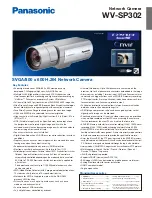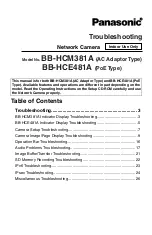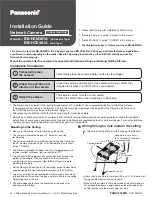
78-4
Catalyst 4500 Series Switch, Cisco IOS Software Configuration Guide - Cisco IOS XE 3.9.xE and IOS 15.2(5)Ex
Chapter 78 Configuring Cisco IOS IP SLA Operations
Understanding Cisco IOS IP SLAs
6.
Display and interpret the results of the operation using the Cisco IOS CLI or a network
management system (NMS) system with SNMP.
For more information about IP SLAs operations, see the operation-specific chapters in the
Cisco IOS IP
SLAs Configuration Guide
:
http://www.cisco.com/en/US/products/ps6441/products_installation_and_configuration_guides_list.ht
ml
The switch does not support Voice over IP (VoIP) service levels using the gatekeeper registration delay
operations measurements. Before configuring any IP SLAs application, you can use the
show ip sla
application
privileged EXEC command to verify that the operation type is supported on your software
image.
IP SLAs Responder and IP SLAs Control Protocol
The IP SLAs responder is a component embedded in the destination Cisco device that allows the system
to anticipate and respond to IP SLAs request packets. The responder provides accurate measurements
without the need for dedicated probes. The responder uses the Cisco IOS IP SLAs Control Protocol to
provide a mechanism through which it can be notified on which port it should listen and respond. Only
a Cisco IOS device can be a source for a destination IP SLAs Responder.
Note
The IP SLAs responder can be a Cisco IOS Layer 2, responder-configurable switch, such as a
Catalyst 3750-X or 3560-X switch running the LAN base feature set or a Catalyst 2960 switch. The
responder does not need to support full IP SLAs functionality.
shows where the Cisco IOS IP SLAs responder fits in the IP network. The responder listens
on a specific port for control protocol messages sent by an IP SLAs operation. Upon receipt of the
control message, it enables the specified UDP or TCP port for the specified duration. During this time,
the responder accepts the requests and responds to them. It disables the port after it responds to the IP
SLAs packet, or when the specified time expires. MD5 authentication for control messages is available
for added security.
You do not need to enable the responder on the destination device for all IP SLAs operations. For
example, a responder is not required for services that are already provided by the destination router (such
as Telnet or HTTP). You cannot configure the IP SLAs responder on non-Cisco devices and Cisco IOS
IP SLAs can send operational packets only to services native to those devices.
Response Time Computation for IP SLAs
Switches and routers can take tens of milliseconds to process incoming packets due to other high priority
processes. This delay affects the response times because the test-packet reply might be in a queue while
waiting to be processed. In this situation, the response times would not accurately represent true network
delays. IP SLAs minimizes these processing delays on the source device as well as on the target device
(if the responder is being used) to determine true round-trip times. IP SLAs test packets use time
stamping to minimize the processing delays.
When the IP SLAs responder is enabled, it allows the target device to take time stamps when the packet
arrives on the interface at interrupt level and again just as it is leaving, eliminating the processing time.
This time stamping is made with a granularity of sub-milliseconds (ms).
Summary of Contents for Catalyst 4500 Series
Page 2: ......
Page 4: ......
Page 2086: ...Index IN 46 Software Configuration Guide Release IOS XE 3 9 0E and IOS 15 2 5 E ...
















































